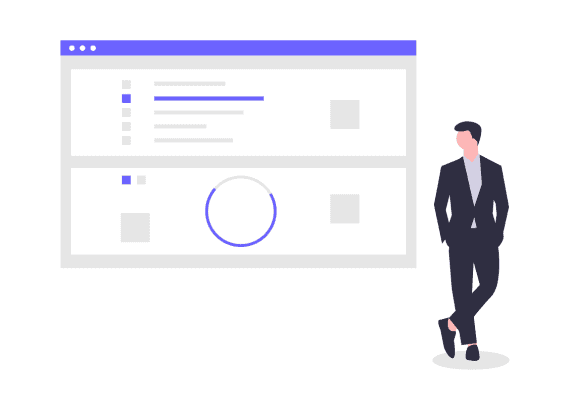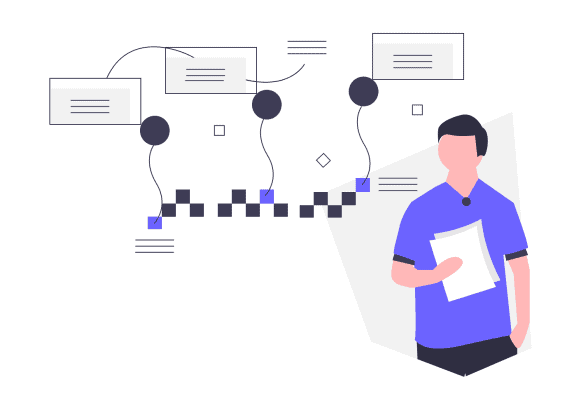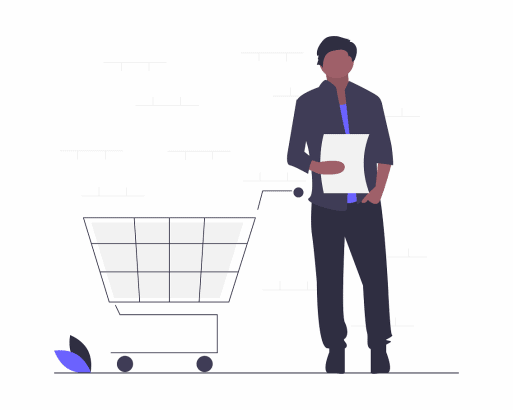Combining Business Intelligence with marketing automation can help convert visitors into customers, keep them coming back, and grow your business. Business evolves rapidly due to modern technology and digital marketing. The business opportunities these trends trigger for your business are substantial, but building and managing a sophisticated eCommerce business requires increased marketing automation because you can’t respond to each sign of a buyer’s interest manually.
Using marketing automation can notably increase web store conversion and improve the customer experience.
What is Marketing Automation?
The key to successful marketing automation that unlocks valuable business intelligence already lies in your database and uses the information to gain actionable analytics and deliver personalized marketing campaigns. Marketing automation is often confused with general email marketing.
Email marketing is a great place to commence your marketing efforts. It’s one thing to send out the same emails to everyone on a generic, non-segmented list about an event your company is having, but that barely relates to the point of the lifecycle where each of your (potential) customers are.
Marketing automation allows you to nurture customers according to their needs by speaking with them and not to them. With marketing automation, messages can be created based on an individual’s recent actions. It has far greater ROI than you could ever get from simple email marketing and has copious opportunities for increased conversion.
It might seem like a good idea to get a tool that has lots of bells and whistles, but maybe they would just serve as clutter and get in your way.
Here are 10 Marketing Automation Best Practices for eCommerce
1. Formulate a BI Strategy

No business strategy can be put into place without having a plan or blueprint, so your marketing automation software should provide the tools and resources necessary to adopt third-party applications, handle broad business and marketing processes, convey information to stakeholders and customers and enable making better decisions. You can’t measure your results or adjust your strategy if you don’t have a plan that is critically distinctive. Gathering intelligence from Business Intelligence (BI) sources should enable you to adapt quickly to changing conditions, identify the needs of customers and stakeholders, deliver personalized content and work within the framework of your CRM software. Your business strategy consists of determining the benchmarks that trigger automatic marketing processes, the conditions for generating alerts and reports to staff and when to augment the sales process with staff assistance or customer service.
2. Making Proactive Business Decisions

Your business needs to respond to opportunities and threats before they occur, and BI-gathering and software capabilities are critical for reducing latency and optimizing faster decisions. Setting up proactive notifications and alerts helps to provide timely and fresh information to all key stakeholders and decision-makers throughout an organization. A robust software system can ensure that all users view only the latest, synchronized data. Both proactive and reactive decision-making has often lagged behind in many industries due to poor integration of basic business intelligence that doesn’t reach the right people. Faster reaction times can provide key business benefits by responding to these conditions:
- Changes in customer behavior
- Evolving customer preferences
- Market trends and conditions
- Changes in company capabilities
- Identifying new spending patterns
- Regulatory change
3. Integrating Data Constantly
Your eCommerce data includes information and resources that support operating systems and data from other sources such as customer database, websites and third-party applications and resources. Your system needs to update and integrate this data continuously to enable predictive modeling, content curation, alerts, and notifications. You might need to remove obsolete information, cleansing data and validating metadata to ensure that the information is reliable or that a policy change is authorized. Automation software interprets data from various sources and disseminates the information to the appropriate data marts that are focused on specific business needs. The information might generate a particular marketing message for the customer or a staff alert.
The information is also sent to the dashboard, relevant reports, and analytics operations. The steps of updating and integrating include:
- Acquiring the data from its source
- Identifying the information’s relevance
- Integrating the data with the right applications and performing any necessary calculations
- Propagating the information to the right users and BI applications
4. Providing Customer Service Options at Optimal Times

Customer service is often a problem with automated marketing software because people get frustrated when they’re dealing with impersonal machines. Marketing automation is typically centered around gathering new leads for their conversion. But we cannot discount the efficacy of automation in nurturing current customers and building lifelong relationships with them.
Automation can help build relationships with consumers. Whether it is assisting them with their order inquiries, customer service issues, or anything else – it can help build a fuller, better, and more comprehensive omnichannel experience.
With a manual process, you often risk sending an email at inappropriate times and, as a consequence, losing them somewhere in the middle of the buyer’s journey or onboarding process.
An automated flow, set up according to triggers that still looks like it was written by a human, will massively improve your email productivity and improve your customer engagement thus increasing your retention rate and profitability.
5. Granular Insights of Reports for Appropriate Action

A robust eCommerce platform allows you to customize reports for actionable insights and market analyses. Forbes reports that 26 percent of CIOs and CFOs believe that big data and analytics are essential to growth, and 96 percent of companies admit that they could do more with data and analytics than they’re currently doing. If you want to do more with data, you need detailed reports and monitoring tools that you can adjust to identify opportunities and threats. You need to gather information from multiple sources to develop insightful reports on trends, consumer behavior, and internal efficiency. Real-time reports can provide statistics and performance indicators so that managers can schedule interactive voice responses, respond to changing business environments.
6. Designing Automated Email Campaigns

Automatic email campaigns can be triggered by events, behaviors or complex combinations of conditions, and intuitive marketing automation software can customize emails for thousands of scenarios such as welcome email practice, subscription reminders, etc. Email campaigns that are cost-effective and productive. You can welcome new customers, thank clients for their orders, send a list of accessories for a product someone ordered or promote a sale, exclusive offer to loyal customers or social media campaign. Greet your best customers on their birthdays/anniversaries, ask questions about new products. Multifaceted software provides everything you need to draft custom messages, track orders, analyze how each campaign is doing and prevent sending duplicate emails.
7. Developing a Lead-Management Process
Automation won’t yield the kind of results that you want unless you have a solid process for finding, qualifying, nurturing and managing leads. Your automation processes work for lead routing, capturing leads at trigger points and supplying critical content at the right time. However, you’ll never get from point A to ultimate sales conversions without mapping the process.
Mapping your lead process and delivering relevant data to the right channels can generate up to 5X revenue when you have a solid lead-management procedure in place. Capturing qualified leads effectively is one of the most challenging tasks of automation so your system should offer these features at a minimum:
- Integrating your website, opt-in forms, and newsletters to provide critical information
- Giving customers an option to be contacted
- Providing multiple, strong calls-to-action and routing them appropriately
- Refining the lead-scoring process continuously based on feedback and analytics
Segmenting high-quality leads can be expensive but marketing automation gives you the opportunity to segment your leads which can generate far greater returns
8. Provide Customized Content

Content-based automation comprises messages that are based on purchase history include user tips, instructions, and recommendations for additional services, for example. You can recommend additional services and give tips for people that buy certain products and upsell and cross-sell substantially. Delivering personalized messages based on a prospect’s behavior and history increases sales conversions dramatically. Intuitive software can respond to key signals and what people do after they leave your website or landing pages. Employing an advanced eCommerce platform, you can customize messages, illustrations, graphics, offers, emails, newsletters, and other curated content to find the best match based on parameters that you set. You can also trigger specific content based on analytics and what got the best results from similar prospects at a particular stage of the sales process.
Providing free educational content shows that you are going the extra mile and that you care. That value can help people warm up to you and even like you when they aren’t quite ready to commit. You may want to direct your customers to your help section, to an upcoming webinar you are hosting, to an eBook, or to some blog posts. What you choose to direct them to depends on their stage in the customer lifecycle. Ensure that you are sending them valuable information based on their preferences and current stage, and not just cluttering their inbox.
The first step you may consider in tailoring an effective educational content is to start with a simple survey on your install base, asking what problems they face when using your products. Customers love browsing sites that have stored information about them from the past and display content relevant to them.
Another excellent tactic is to have a customized/personalized home page for your customers based on their interests and behavior. This enhances their experience as it makes relevant content easily accessible to them. They don’t have to go through several steps to find what they need and want. A good example of this would be Netflix!
9. Managing Production Flows
Regardless of whether you’re selling manufactured products, services or SaaS applications, each sale could affect production, ordering, scheduling, and other important business decisions. Market changes could send your products into high demand or force major cutbacks in manufacturing, development or expansion plans. Using the right eCommerce platform helps you to adjust workflows and production schedules based on real-time orders or anticipated sales. Your platform needs to integrate seamlessly with third-party tools, SQL Scripts, and multiple databases to fetch the relevant information and deliver it to the appropriate decision-maker or departments.
Marketing automation can be launched having an agile tool to work with makes it easy to create new messages and drip campaigns without technical pain. Monitoring the results and testing is essential for every store that has its own unique customer base with its own marketing practices.
10. Re-engage Abandoned Cart Customers

You probably have thick skin and understand the reality that not all customers are forever. Someone may have inquired about your product never to be heard from again. Another may have been interested enough to subscribe to your email list, but then did not take any other action. And another may have purchased from you, but never returned. Don’t settle for that if you can use marketing automation to re-engage these folks. Re-engage them by sending a customer survey, offering a promotion, or prompting them with alternate products, to guide them towards different options.
People have all different sorts of reasons for abandoning their carts (hint: it’s not always intentional!). They may abandon their carts because they decided to go with another online competitor (so sad, but that’s the reality of commerce!), but what if it was just because they got distracted or ran out of time before an appointment they had scheduled and then forgot to come back? Those people just need a little nudge!
Another reason for cart abandonment is that they may have had some uncertainties around the product. Try sending an automated email educating them on why that product would be beneficial for them and draw them back to complete the purchase process. Marketing automation is a great way to remind people of what they’ve unintentionally left behind.
Conclusion
The ample marketing automation solutions on the market are daunting. So, a suggestion would be to think about what you want to accomplish with the tool you choose and which one will meet those needs.














